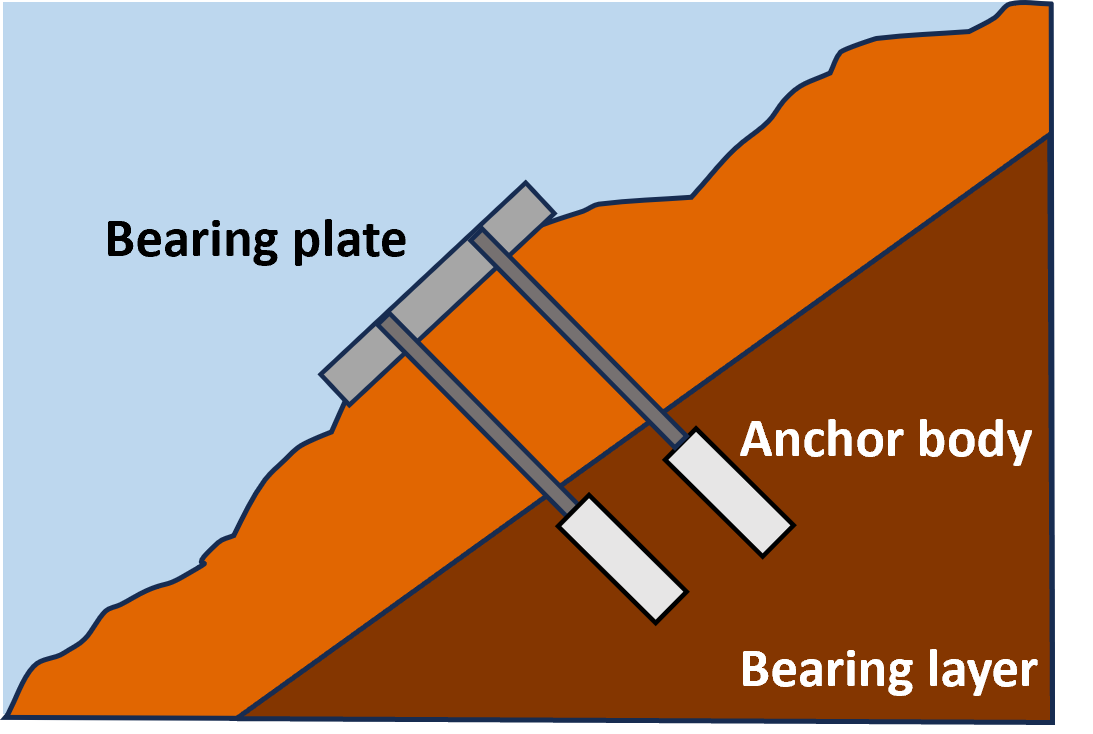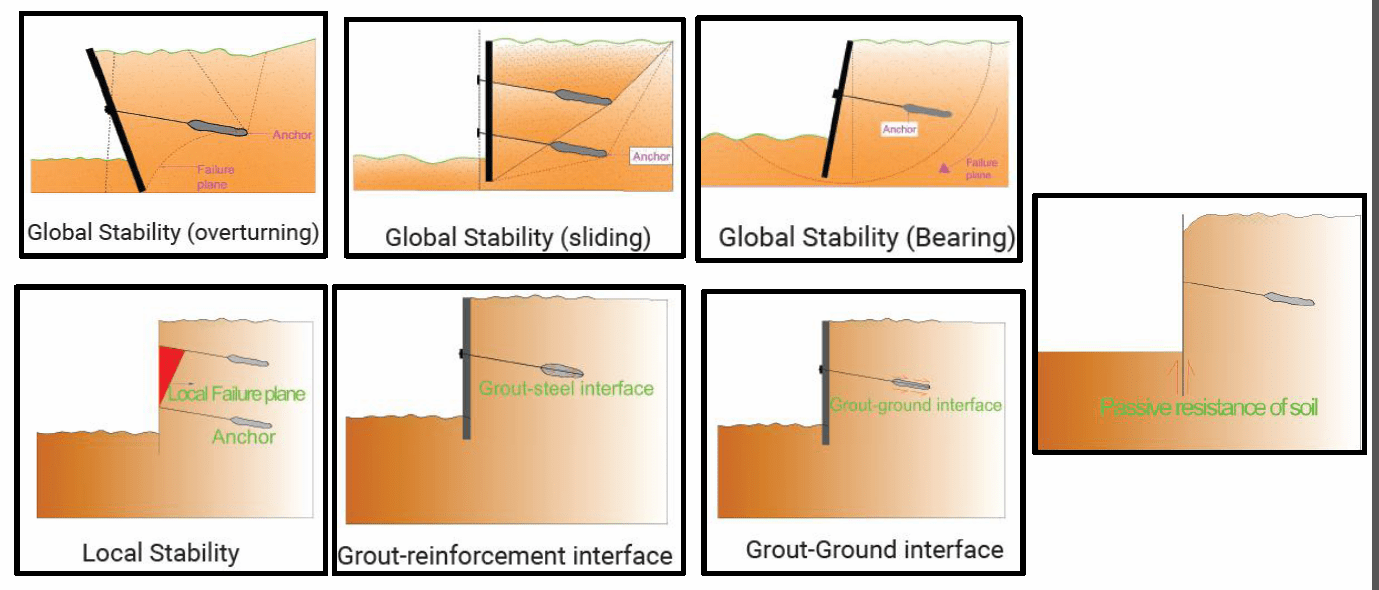How Heavy-Duty Earth Anchors Work: A Comprehensive Overview to Dirt Anchoring Solutions
Sturdy Earth anchors play a vital duty in offering security and support in different building and construction applications. By installing deeply right into the ground, they stand up to vertical and lateral pressures properly. Various sorts of supports cater to different dirt conditions, making them functional. Recognizing their auto mechanics and installation methods is necessary for maximizing efficiency. What aspects influence their efficiency, and exactly how do they compare to standard approaches? The solutions may shock you.
Understanding Heavy-Duty Earth Anchors
Sturdy Earth supports work as necessary components in numerous construction and landscape design projects, giving security and support in difficult dirt conditions. These anchors operate by being embedded into the ground, where they stand up to vertical and side forces. Their design enables for safe and secure add-on to structures, guaranteeing they continue to be secured versus dirt motion or exterior loads.The efficiency of durable Earth anchors mainly relies on the kind of dirt and the support's installment depth. Correct setup techniques are critical, as they determine the anchor's holding capacity. Ecological aspects, such as wetness and freeze-thaw cycles, can likewise affect performance.These supports are frequently made use of in applications varying from safeguarding fencings and keeping wall surfaces to supporting short-term frameworks during damaging climate condition. Understanding the concepts behind durable Earth anchors is vital for experts seeking to improve the toughness and security of their jobs.
Kinds Of Heavy-Duty Earth Anchors
Various kinds of durable Earth anchors are developed to meet details demands based upon dirt problems and project demands. Helical anchors, featuring screw-like blades, work in softer dirts, providing high lots capabilities and easy installation. Driven supports, which are inculcated the ground, appropriate for rough terrains and give instant lots assistance. Tie-back supports are frequently utilized in preserving wall applications, permitting side assistance by anchoring into the ground at an angle. One more kind is the cast-in-place support, ideal for concrete applications, as they are integrated right into foundations for enhanced stability. Soil screw supports are versatile choices that can be utilized in different soil types, providing trusted tension and compression capacities. Each kind serves distinct applications, ensuring security and safety and security in building and construction and landscaping projects. Comprehending these alternatives permits informed choices in selecting the ideal Earth securing option.
The Mechanics of Dirt Anchoring

Comprehending the auto mechanics of soil anchoring calls for an examination of different sorts of Earth supports and their installment techniques. Each support kind provides distinct characteristics that influence its efficiency in various dirt problems. Appropriate installation methods are crucial for optimizing the securing system's security and performance.
Sorts Of Earth Anchors
Earth supports, important parts in dirt anchoring systems, can be found in several types, each developed for certain applications and dirt problems. The most common kinds include screw supports, which are twisted right into the ground, providing strong lateral resistance. Helical supports feature blades that permit effective setup in various soil types, making them suitable for both permanent and short-lived applications. Driven supports, generally made from steel, are inculcated the soil and are effective in thick or rough environments. Auger anchors use a helical layout to facilitate setup in softer soils. Plate anchors consist of a level plate hidden flat, distributing lots over a bigger location, perfect for applications requiring high tons abilities in cohesive dirts.
Installation Techniques Discussed
Proper setup techniques are crucial for the performance of soil anchoring systems. The procedure commonly starts with site analysis, verifying the selected location can sustain the anchor's load. After identifying the proper anchor kind, correct opening depth and angle must be established. The installment entails driving the anchor right into the ground making use of customized tools, such as hydraulic or hands-on drivers, to attain best embedment. Post-installation, tensioning the anchor is important to assure stability; this is usually verified with lots screening. In addition, bordering soil conditions should be kept an eye on to avoid displacement. Complying with these methods not just improves the support's efficiency yet additionally extends its life expectancy, supplying trusted assistance for numerous applications.
Applications of Heavy-Duty Earth Anchors
While durable Earth anchors are often linked with construction and landscape design, their flexibility extends to a selection of applications throughout various industries. In civil engineering, they supply crucial assistance for maintaining wall surfaces, making sure stability in areas prone to soil erosion. The marine sector makes use of these anchors for safeguarding docks and marinas, avoiding movement brought on by currents and tides. In addition, in the telecommunications industry, heavy-duty Earth supports are substantial for supporting cell towers and various other high frameworks against wind pressures. Agricultural applications likewise benefit, as these supports can safeguard frameworks like greenhouses and animals secure fencing, ensuring they hold up against extreme weather. In addition, in renewable energy jobs, such as wind ranches, Earth anchors play an essential duty in protecting wind turbine structures, improving total safety and efficiency. This broad series of applications highlights the versatility and integrity of durable Earth anchors throughout different areas.
Advantages Over Traditional Anchoring Techniques
Although standard anchoring techniques have actually long been trusted for stability, heavy-duty Earth anchors supply significant advantages that improve efficiency and efficiency. One significant benefit is their superior load-bearing capability, which permits them to withstand higher pressures without failing. This stamina makes them perfect for requiring applications, such as in construction and energy installations.Additionally, sturdy Earth supports are made for deeper setup, providing greater stability in various soil conditions, including sandy or loose soils. Their resistance to rust and environmental factors assures a much longer life-span and lowered maintenance costs compared to standard methods.Moreover, these anchors can be set up with very little disturbance to the surrounding location, preserving the integrity of the landscape. In general, sturdy Earth anchors provide a trusted and reliable solution for securing demands, exceeding the constraints frequently connected with traditional anchoring methods.
Setup Process and Ideal Practices
The installation process for dirt securing services starts with detailed prep work and site analysis to guarantee peak performance. Following this, company website a step-by-step installation overview offers clear instructions for reliable application (heavy-duty earth anchors). Abiding by these ideal methods is important for achieving durable and trustworthy anchoring results
Prep Work and Website Evaluation
Reliable preparation and thorough website analysis are crucial action in the setup of soil securing solutions. Before installment, the soil kind should be assessed to establish its bearing capability and viability for anchoring. Carrying out a geotechnical survey can provide vital info concerning soil composition, wetness degrees, and prospective ground movement. In addition, identifying existing structures, vegetation, and energies is important to avoid interference throughout setup. The location needs to be free from particles and obstacles to ensure secure accessibility for equipment. Weather should also be kept track of, as adverse conditions can impact both safety and setup efficiency. By meticulously preparing the site and assessing all pertinent elements, the probability of effective anchor efficiency is considerably increased.
Step-by-Step Installation Overview
A complete installment process is important for accomplishing excellent efficiency of dirt anchoring services. The setup begins with selecting the appropriate anchor type and assuring the website is free from particles. Next off, correct hole positioning is figured out based on lots needs. Once the location is established, holes are drilled to the specified depth and size utilizing the proper devices. The support is then inserted right into the opening, seeing to it it is aligned correctly. After securing the support, dirt is backfilled and compacted to enhance security. It is important to adhere to supplier guidelines throughout the procedure. A post-installation inspection validates that the anchors are sufficiently located and working as planned, supplying reputable assistance for the intended application.

Upkeep and Inspection of Earth Anchors
Routine maintenance and examination of Earth supports are vital for making certain long-lasting performance and stability. Periodic checks permit the very early discovery of issues such as deterioration, loosening, or dirt movement. Assessors must search for signs of corrosion or deterioration on the support elements, especially at the link factors. Furthermore, the surrounding soil needs to be examined for disintegration or adjustments in wetness content, which can influence anchor effectiveness.It is a good idea to establish a regular inspection routine, ideally at the very least when a year, depending on environmental problems. During evaluations, all noticeable parts must be cleaned up to get rid of dust or debris that can conceal potential issues. Any kind of indicators of distress, such as turning structures or unusual settling, need to prompt immediate evaluation. Appropriate documents of evaluations can assist in tracking anchor performance with time and assist in timely maintenance actions, making certain the anchors continue to be functional and trustworthy.
Regularly Asked Questions
What Products Are Heavy-Duty Earth Anchors Typically Made From?
Sturdy Earth supports are usually built from sturdy products such as galvanized steel or stainless steel, ensuring toughness and resistance to rust. These materials provide durable support and stability in different soil problems and applications.
How Do Dirt Problems Influence Anchor Efficiency?
Soil problems greatly affect anchor efficiency. Aspects such as soil kind, moisture web content, and compaction affect the support's grip and security, with cohesive soils usually giving better resistance than sandy or loosened soils, impacting total effectiveness.
Can Heavy-Duty Earth Anchors Be Recycled After Removal?
Heavy-duty Earth anchors can be recycled after removal, offered they are inspected for damage and wear. Correct cleaning and maintenance improve their longevity, making certain effective performance in subsequent installations when conditions permit secure reinstallation.
What Are the Environmental Impacts of Utilizing Earth Anchors?
The ecological impacts of utilizing Earth anchors consist of potential soil disturbance, disruption of neighborhood environments, and feasible contamination of groundwater. However, if used responsibly, their benefits commonly surpass these concerns, advertising stability in various applications.
Just how Do I Select the Right Anchor for My Task?

Comments on “Installation Blueprint of soil anchoring solutions That Last Decades”